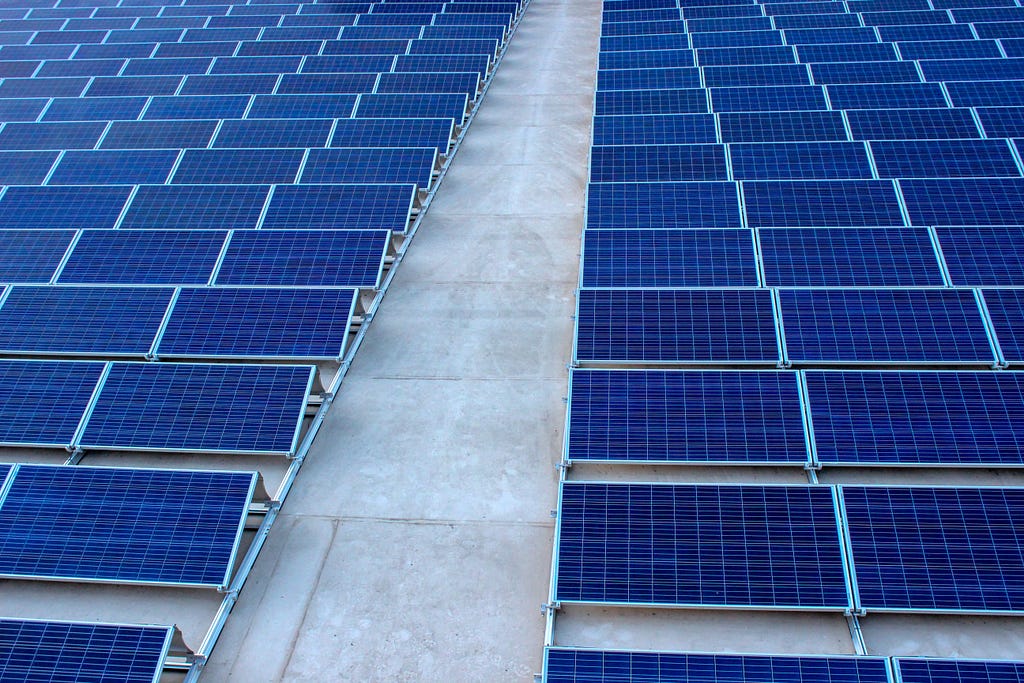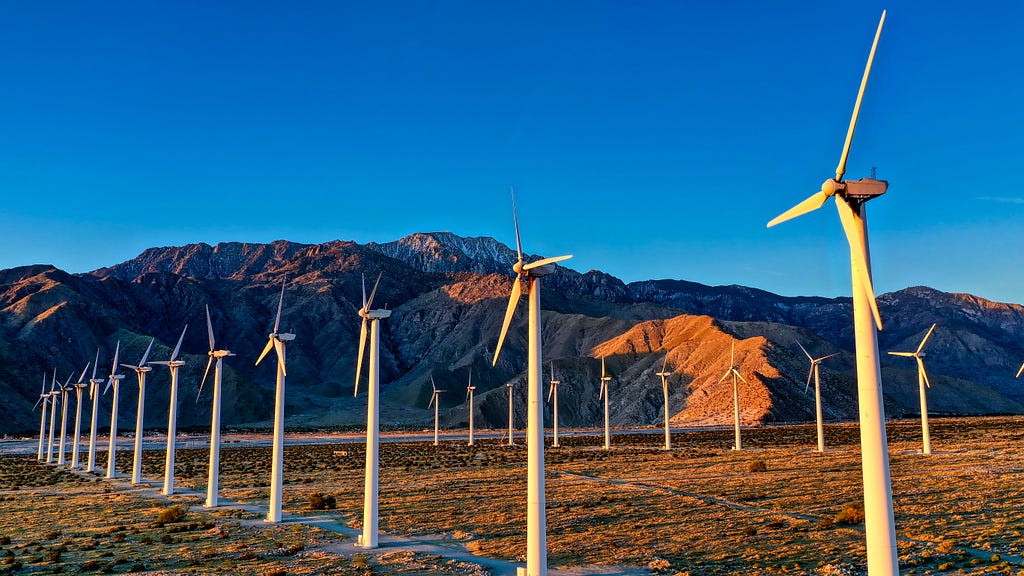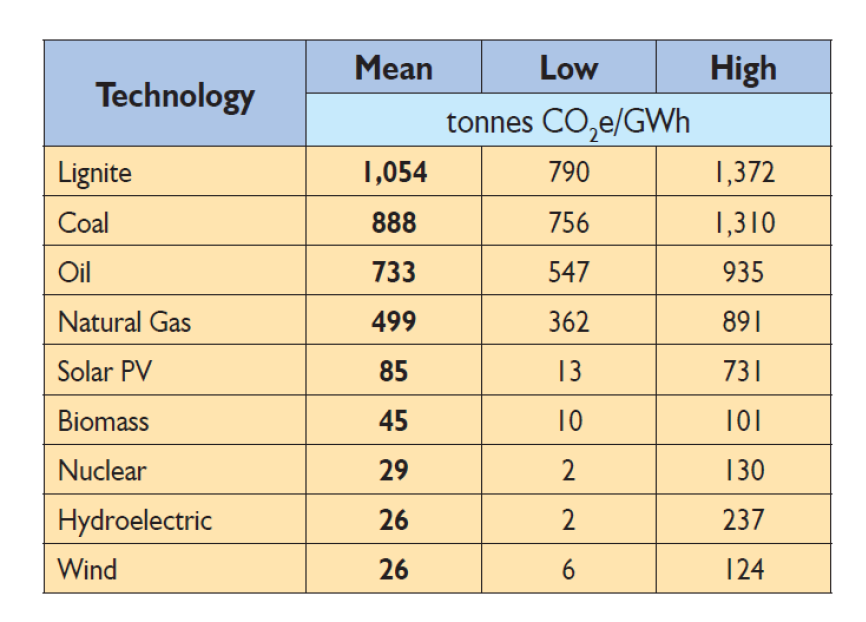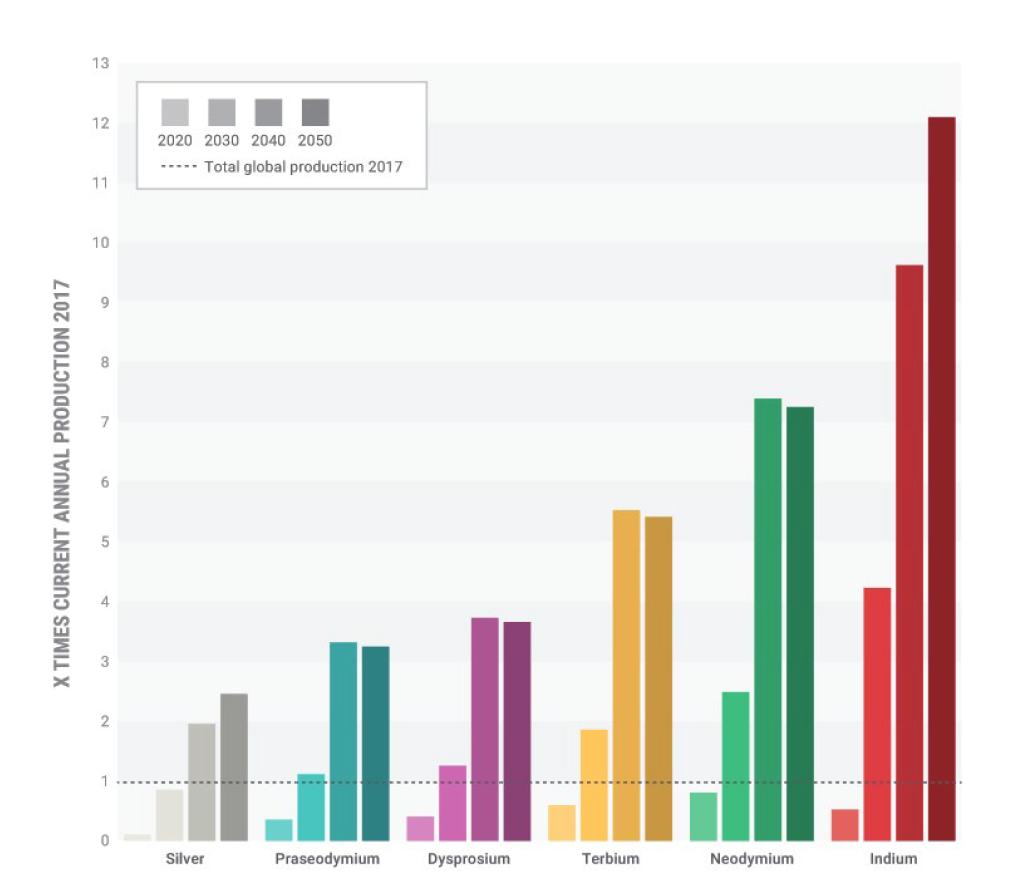By Emilien Etchevers, MEng ’20 (IEOR)


Underestimated emissions
The first, and biggest, problem that arises here is that emissions are grossly underestimated when it comes to these energy sources. Of course, their actual usage emits close to nothing; that is what makes them so appealing. However, this is much less true when the full life cycle of these products is considered. As seen in the table below, the average estimate of solar energy emissions is 85 tons per GWh, while the average for wind turbines is around 26 tons per GWh [3]. This is mainly due to the energy used for the extraction of raw materials needed to build them, their production (especially since as opposed to many other energy sources, they require many individual objects, as opposed to a single coal or nuclear plant) and dismantling once its usage has ended. It is evidently much better than gas or coal sources, but it is still not the perfectly clean energy source people tend to imagine. In particular, nuclear power emits about as much as wind energy all things considered.
Uncommon materials
A second big issue with photovoltaic panels and wind turbine batteries are their important usage of rare earths and other uncommon materials, such as silver, neodymium or indium. In particular, to follow the goals set at COP21 using wind turbines and PV panels, production would have to increase dramatically: by 2050, it would need to be multiplied by 2.5, 7.5 and 12 respectively for aforementioned metals [4]. Worse, this factor multiplication does not consider what is used in other products, such as smartphones, laptops or electric cars… The risk of shortages in these raw materials will become more and more important as demand increases [5]. The geopolitical implications are huge: most of the production is made outside of the United States or Europe (primarily in China where 80% of mining and 95% of refining is done), making these two regions very vulnerable in the upcoming decades [4]. And what is to say of extraction conditions for employees and biomes as demand becomes more pressing, as their production is often done in areas only displaying few environmental precautions:
Meeting the energy demand
Finally, these previous considerations set aside, it is highly unlikely these energy sources will be enough to cover the increasing energy demand coming from an ever-growing population. As it is right now, the conversion ratio for solar and wind power is still well under what would be needed to compensate for the reduction of coal or gas usage. This is particularly visible in terms of land usage: compared to coal, solar and wind energy require respectively 3 and 6 times more land [6]! The figures are similar when looking at nuclear energy, which emits at most as much CO2 than these sources. These can even be considered highly conservative estimates, as some sources describe them as needing 75 and 360 times more land [7]! All this does not even consider how less reliable these two energy sources are: could society function with power shortages due to prolonged cloudy weather or periods without wind?
Realistic applications of wind and solar energy
Of course, all of this does not mean solar and wind energy should be completely abandoned: it is just a demonstration that they cannot suffice to answer the environmental challenges of the upcoming century. Nuclear power, on the other hand, seems like a very good alternative: low emissions, high energy return… Its risks are very often highly over-estimated [8] (in particular because of the general public’s misconceptions about the dangers of radioactivity), while it seems to be the key to move away from the current system of highly carbonated power sources. Over a longer timeframe, it will however be essential to reduce our energy consumption as a whole and imagine new ways of living sustainably, to accommodate an ever-growing world population without an uncontrollable increasing need in energy production!About the author:
Emilien Etchevers is a current Master of Engineering candidate at UC Berkeley with a focus on Industrial Engineering and Operations Research. Connect with Emilien.References:
- [1]: Masson-Delmotte, V., P. Zhai, H.-O. Pörtner, D. Roberts, J. Skea, P.R. Shukla,A. Pirani, W. Moufouma-Okia, C. Péan, R. Pidcock, S. Connors, J.B.R. Matthews, Y. Chen, X. Zhou, M.I. Gomis,E. Lonnoy, T. Maycock, M. Tignor, and T. Waterfield (eds.). IPCC, 2018: Summary for Policymakers. In: Global Warming of 1.5°C. An IPCC Special Report on the impacts of global warming of 1.5°C above pre-industrial levels and related global greenhouse gas emission pathways, in the context of strengthening the global response to the threat of climate change, sustainable development, and efforts to eradicate poverty. October 6,2018
- [2]: “Electricity Generation and Related CO2 Emissions”, Planete-Energies. https://www.planete-energies.com/en/medias/close/electricity-generation-and-related-co2-emissions. December 2, 2016
- [3]: Jamie McIntyre, Brent Berg, Harvey Seto and Shane Borchardt, “Comparison of Lifecycle Greenhouse Gas Emissions of Various Electricity Generation Sources”, World Nuclear Association. July 2011
- [4]: Pieter van Exter, Sybren Bosch, Branco Schipper, Benjamin Sprecher and René Kleijn, Metal demand for renewable electricity generation in the Netherlands. 2018
- [5]: Ali, S., Giurco, D., Arndt, N. et al. Mineral supply for sustainable development requires resource governance. Nature 543, 367–372. March 2017
- [6]: Landon Stevens, The footprint of energy: land use of US electricity production. June 2017
- [7]: “Land Needs for Wind, Solar Dwarf Nuclear Plant’s Footprint”, NEI, https://www.nei.org/news/2015/land-needs-for-wind-solar-dwarf-nuclear-plants. July 2015.
- [8]: Jordan Wilkerson, “Reconsidering the risks of Nuclear Power”, Harvard University. http://sitn.hms.harvard.edu/flash/2016/reconsidering-risks-nuclear-power/. October 2016
Op-ed: Blowing away idealizations about wind and solar energy was originally published in Berkeley Master of Engineering on Medium, where people are continuing the conversation by highlighting and responding to this story.

